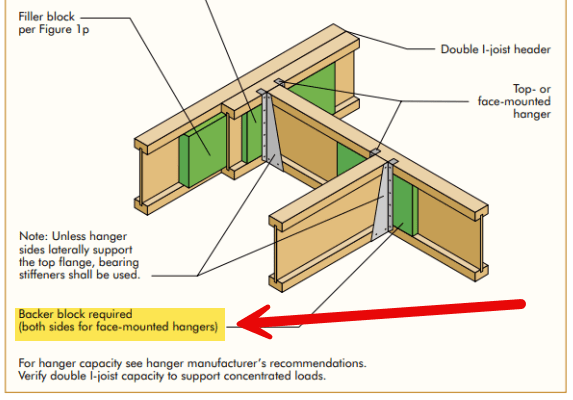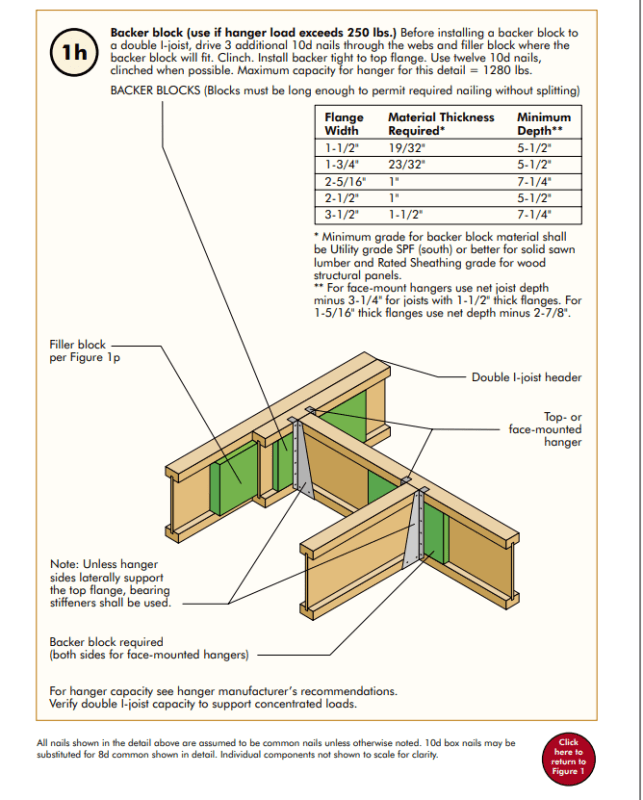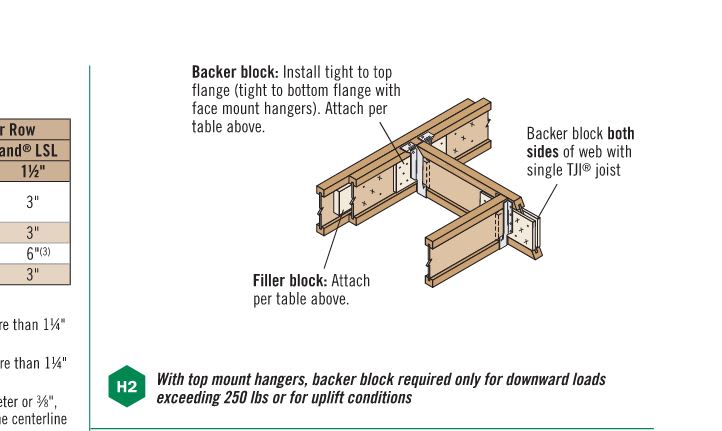Navigation
Install the app
How to install the app on iOS
Follow along with the video below to see how to install our site as a web app on your home screen.
Note: This feature may not be available in some browsers.
More options
Style variation
-
Congratulations MintJulep on being selected by the Eng-Tips community for having the most helpful posts in the forums last week. Way to Go!
You are using an out of date browser. It may not display this or other websites correctly.
You should upgrade or use an alternative browser.
You should upgrade or use an alternative browser.
Web Packout for I joist
- Thread starter bigmig
- Start date
- Status
- Not open for further replies.
SWComposites
Aerospace
probably because a face mounted hanger on those type of joists is a bad idea. would put a vertical tensile stress in the joint between the web and cap members, which the joist is likely not designed for.
Facemount hangers are absolutely fine on i-joist, but some additional considerations are required. Your filler/backer block must sit flush with the flanges. Additionally, the connection of the filler/backer block to the joist web must be considered to match the reaction capacity required out of the hanger. That is to say, you will need to run double shear calcs with nails attaching the filler/backer block to the joist web to ensure enough nails are provided to make this assembly act as 'one', which then allows the facemount hanger to attach to this assembly and makes the assembly act as a composite piece, rather than 3 seperate shear planes. Nothing terribly complex, just want to ensure the connection assumptions for the hanger to the joist are valid.
DoubleStud
Structural
the only time I hang something from an I-joist is a block out for an opening for a pipe/duct. So it is only affecting 2 joists. I never use I joist as a transfer beam. I almost always use double LVL minimum. Why do you need to hang from an I-joist?
would put a vertical tensile stress in the joint between the web and cap members, which the joist is likely not designed for
This is not the expected behavior of this assembly type, and would only occur if the connection between the filler/backer and joist web is insufficient to support the hanger, and instead, the filler/backer is bearing directly onto the bottom flange. That's the only situation that would cause web route pull away, and can be avoided by using a sufficient connection schedule between the filler/backer and joist web.
Harbringer
Structural

Face mount hangers are part of the detail the OP posted. Using face mount hangers for IJ's is not that unusual provided you understand the limitations. Note the 1280lb limit on the OP's detail.
I agree with the others above. I never use an I-joist to support another member, always an LVL or solid lumber instead.
But if I had to, I think I'd be mostly ok with doing the following:
[ol 1]
[li]Use solid blocking along both sides of the web with the face of the blocking flush or slightly proud of the side of the top and bottom chords.[/li]
[li]Design the blocking to web connection for the load from the supported member.[/li]
[li]Leave a small gap between the bottom of the blocking and the top of the bottom chord to ensure that load from the blocking isn't pushing down on the bottom chord.[/li]
[/ol]
The torsion acting on the I-joist from either a face or top mount connection doesn't seem great, but I suppose the manufacturers aren't too worried about it or else they wouldn't allow this type of connection.
But if I had to, I think I'd be mostly ok with doing the following:
[ol 1]
[li]Use solid blocking along both sides of the web with the face of the blocking flush or slightly proud of the side of the top and bottom chords.[/li]
[li]Design the blocking to web connection for the load from the supported member.[/li]
[li]Leave a small gap between the bottom of the blocking and the top of the bottom chord to ensure that load from the blocking isn't pushing down on the bottom chord.[/li]
[/ol]
The torsion acting on the I-joist from either a face or top mount connection doesn't seem great, but I suppose the manufacturers aren't too worried about it or else they wouldn't allow this type of connection.
- Status
- Not open for further replies.
Similar threads
- Question
- Replies
- 2
- Views
- 3K
- Replies
- 11
- Views
- 1K
- Replies
- 14
- Views
- 5K
- Locked
- Question
- Replies
- 9
- Views
- 2K
- Replies
- 15
- Views
- 4K


